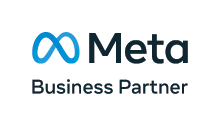Pride Month may be at an end, but that doesn’t mean companies’ support of the LGBTQ+ community should be! Marching in pride parades, changing logos to rainbow, and sponsoring events isn’t the only way to reach out to the LGBTQ+ community — here are 6 suggestions for ways to support the LGBTQ+ community year-round:
1: Hire inclusively

Employment discrimination is an issue that still faces the LGBTQ+ community, despite legislation making discrimination on the grounds of sexual orientation or gender reassignment illegal. Stonewall found that 18% of LGBTQ+ people had experienced discrimination while trying to find a job in the UK during the past year. These struggles impact transgender people even more than their non-trans LGBQ+ counterparts, with one survey in 2018 finding that 1 in 3 UK employers admitted they would be ‘less likely’ to hire a transgender person.
Making it clear that you welcome LGBTQ+ applicants to positions not only helps a community who experience employment discrimination, but also helps to attract talent to your company. 99% of LGBTQ+ people value a potential new employer’s track record and reputation for equality while searching for a new job.
2: Be representative in your marketing content
While ads that show same-gender couples, transgender people, and LGBTQ+ symbols are common in Pride Month specific campaigns, inclusion of them in year-round promotional material can go a long way. Not only does including them in promotional material normalise LGBTQ+ people as part of society, but it can also have a positive impact on sales, up to a 40% increase in some cases!
Including LGBTQ+ people in general promotional material also reflects demographic changes, with 1 in 6 Gen-Z adults identifying as lesbian, bi, gay, trans, or queer.
3: Work with LGBTQ+ influencers and creators

One of the benefits of influencer advertising is a perceived authenticity, and working with LGBTQ+ influencers and creators outside of Pride Month can be a powerful tool in building brand loyalty in LGBTQ+ consumers.
4: Support LGBTQ+ employees year-round
Of course, inclusive hiring practices can only go so far in making a workplace supportive for the LGBTQ+ community. 36% of LGBTQ+ workers have experienced harassment or bullying at work, with 30% of trans workers being outed against their will. The stress from an unsupportive work environment can have an impact on LGBTQ+ employees’ productivity.
Developing clear ‘zero tolerance’ policies on homophobic/transphobic harassment, implementing Diversity & Inclusion training for employees, and actively communicating equality policies to all staff are all important steps that can be taken to make a workplace LGBTQ+ friendly. In large organisations, encouraging and supporting the creation of an internal staff LGBTQ+ network group can also be valuable.
When it comes to transgender employees, there are some additional ways workplaces can offer support. Developing a policy to support trans employees — even if companies do not have any out transgender employees at the time of their creation — that includes information on dress code, confidentiality, and using facilities (e.g. toilets and changing rooms) can help facilitate greater trans inclusion in the workplace. Additionally, if private health insurance is offered to employees as a perk, consider ensuring that it includes coverage of gender-affirming healthcare.
While it’s good to involve LGBTQ+ employees in making decisions about policy that impacts them, you shouldn’t expect LGBTQ+ employees to take on the dual workload of their role and educating their co-workers. Not only does it reduce these employees’ ability to carry out the tasks of their actual role, reducing productivity, but it can lead to conversations that can be uncomfortable for, or hostile to these workers.
Instead, seek out resources from specialist organisations, and respect that some LGBTQ+ employees may not want to be involved in policy creation.
5: Create LGBTQ+ specific marketing material beyond Pride month
While normalising LGBTQ+ people through inclusive ads is important — and produces higher purchase intent across genders and ethnicities — making the effort to reach out to LGBTQ+ audiences outside of Pride Month helps to demonstrate that you value LGBTQ+ audiences and customers, helping to build brand loyalty.
For example, in the mid-1990s, Subaru ran an ad campaign specifically targeting lesbians. Printed in lesbian and bisexual women’s magazines of the time and containing nods to then-contemporary lesbian/bi pop culture, the campaign was so effective that lesbians and Subaru are associated even today!
6: Use your power as a company to advocate for LGBTQ+ rights and support LGBTQ+ charities

While charities are some of the most obvious ways to support LGBTQ+ causes financially, they’re not the only way. For example, Jägermeister used its ‘Save the Night’ campaign to support lesbian bars.
Depending on the size of your company, lobbying for LGBTQ+ inclusive laws may also be possible. For example, tech giant Apple, whose CEO Tim Cook is openly gay, is currently lobbying to oppose bills targeting gay and transgender people in states like Iowa, Texas and Florida.
Even if you don’t have the resources to lobby, you still have the power to choose where your company’s money goes. Refusing to work with homophobic or transphobic suppliers or vendors can make it clear that your business doesn’t support prejudice, and that homophobia and transphobia are unacceptable in modern business ecosystems.
Work with our partner agency OUT loud to engage LGBT audiences authentically
About the Author
Cameron was a digital marketing executive at OUT loud.








